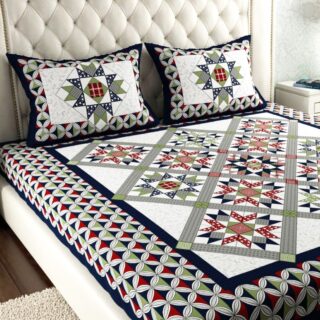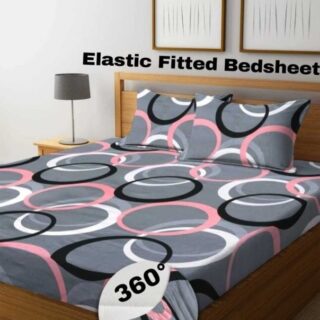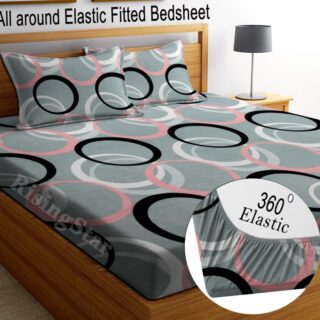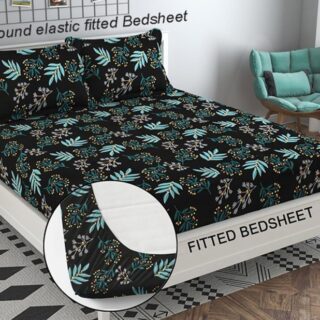Category
Popular Articles
- AI (9)
- Android (35)
- App Suggest (4)
- Apple (5)
- Apple TV (2)
- Bluetooth (2)
- Cars (2)
- ChatGpt (1)
- Did you know? (1)
- E-Commerce News (1)
- Ecommerce Websites business (7)
- Electronics Shopping (5)
- Fashion Tips (3)
- Gaming (3)
- Google Gemini (3)
- Hair Care Tips (2)
- How to (13)
- iCloud (1)
- Infotainment System (1)
- Iphone (93)
- Job Posting (1)
- Mac (18)
- Mobile Games (1)
- Netflix (1)
- Online Shopping Websites (2)
- Personal Finance Management (3)
- Product Reviews (3)
- Roku TV (4)
- Samsung (7)
- Shopping Tips (10)
- Tech (60)
- Windows 11 (4)
- Zero Waste (3)
Discounted Products
-
 Leo Creation 144 TC Cotton Double Jaipuri Prints Flat Bedsheet(Pack of 1, Blue, Gree, Red, Grey, Light Grey)
Leo Creation 144 TC Cotton Double Jaipuri Prints Flat Bedsheet(Pack of 1, Blue, Gree, Red, Grey, Light Grey)
₹2,999.00Original price was: ₹2,999.00.₹329.00Current price is: ₹329.00. -
 Home Garage 210 TC Cotton King Floral Fitted (Elastic) Bedsheet(Pack of 1, Grey)
Home Garage 210 TC Cotton King Floral Fitted (Elastic) Bedsheet(Pack of 1, Grey)
₹999.00Original price was: ₹999.00.₹299.00Current price is: ₹299.00. -
 Goodrik 140 TC Cotton Double 3D Printed Flat Bedsheet(Pack of 1, Brown)
Goodrik 140 TC Cotton Double 3D Printed Flat Bedsheet(Pack of 1, Brown)
₹499.00Original price was: ₹499.00.₹229.00Current price is: ₹229.00. -
 GLOBALSHOP 350 TC Microfiber Double Floral Flat Bedsheet(Pack of 1, Multicolor)
GLOBALSHOP 350 TC Microfiber Double Floral Flat Bedsheet(Pack of 1, Multicolor)
₹1,250.00Original price was: ₹1,250.00.₹263.00Current price is: ₹263.00. -
 RisingStar 250 TC Microfiber King Printed Fitted (Elastic) Bedsheet(Pack of 1, FITTED-ROUND-CIRCLES-PREMIUM)
RisingStar 250 TC Microfiber King Printed Fitted (Elastic) Bedsheet(Pack of 1, FITTED-ROUND-CIRCLES-PREMIUM)
₹2,299.00Original price was: ₹2,299.00.₹299.00Current price is: ₹299.00. -
 Home Garage 210 TC Cotton King Floral Fitted (Elastic) Bedsheet(Pack of 1, Fitted Black Green)
Home Garage 210 TC Cotton King Floral Fitted (Elastic) Bedsheet(Pack of 1, Fitted Black Green)
₹1,299.00Original price was: ₹1,299.00.₹299.00Current price is: ₹299.00. -
 Home Garage 180 TC Cotton King 3D Printed Flat Bedsheet(Pack of 1, White)
Home Garage 180 TC Cotton King 3D Printed Flat Bedsheet(Pack of 1, White)
₹999.00Original price was: ₹999.00.₹229.00Current price is: ₹229.00. -
 Home Sizzler 153 cm (5 ft) Polyester Room Darkening Window Curtain (Pack Of 2)(Floral, Maroon)
Home Sizzler 153 cm (5 ft) Polyester Room Darkening Window Curtain (Pack Of 2)(Floral, Maroon)
₹799.00Original price was: ₹799.00.₹299.00Current price is: ₹299.00. -
 Panipat Textile Hub 152.4 cm (5 ft) Polyester Window Curtain (Pack Of 2)(Solid, Aqua)
Panipat Textile Hub 152.4 cm (5 ft) Polyester Window Curtain (Pack Of 2)(Solid, Aqua)
₹1,899.00Original price was: ₹1,899.00.₹299.00Current price is: ₹299.00. -
 Home Sizzler 214 cm (7 ft) Polyester Semi Transparent Door Curtain (Pack Of 2)(Floral, Maroon)
Home Sizzler 214 cm (7 ft) Polyester Semi Transparent Door Curtain (Pack Of 2)(Floral, Maroon)
₹1,199.00Original price was: ₹1,199.00.₹399.00Current price is: ₹399.00. -
 Home Sizzler 153 cm (5 ft) Polyester Room Darkening Window Curtain (Pack Of 2)(Floral, Brown)
Home Sizzler 153 cm (5 ft) Polyester Room Darkening Window Curtain (Pack Of 2)(Floral, Brown)
₹799.00Original price was: ₹799.00.₹299.00Current price is: ₹299.00. -
 Stella Creations 214 cm (7 ft) Polyester Room Darkening Door Curtain (Pack Of 2)(Abstract, Brown)
Stella Creations 214 cm (7 ft) Polyester Room Darkening Door Curtain (Pack Of 2)(Abstract, Brown)
₹1,299.00Original price was: ₹1,299.00.₹449.00Current price is: ₹449.00. -
 Homefab India 152.5 cm (5 ft) Polyester Room Darkening Window Curtain (Pack Of 2)(Floral, Light Blue)
Homefab India 152.5 cm (5 ft) Polyester Room Darkening Window Curtain (Pack Of 2)(Floral, Light Blue)
₹1,199.00Original price was: ₹1,199.00.₹319.00Current price is: ₹319.00. -
 Urban Home 214 cm (7 ft) PVC Transparent Door Curtain Single Curtain(Solid, Off White)
Urban Home 214 cm (7 ft) PVC Transparent Door Curtain Single Curtain(Solid, Off White)
₹699.00Original price was: ₹699.00.₹203.00Current price is: ₹203.00. -
 Panipat Textile Hub 213 cm (7 ft) Polyester Door Curtain (Pack Of 2)(Solid, Brown)
Panipat Textile Hub 213 cm (7 ft) Polyester Door Curtain (Pack Of 2)(Solid, Brown)
₹1,199.00Original price was: ₹1,199.00.₹349.00Current price is: ₹349.00.
Affiliate Links
Promotion

Part 1 — The Mindset Shift Toward Low-Waste Living
I’m Jessica, and while I’ve always loved the convenience of modern life, I’ve also realized something important: convenience doesn’t have to mean waste. Over the past few years, I’ve shifted toward a more sustainable lifestyle—not out of pressure, but out of a desire for a cleaner home, a healthier family environment, and a simpler daily routine. What surprised me most was how achievable this transition actually is, especially when we focus on practical, accessible swaps instead of perfection.
Zero-waste living isn’t about fitting an entire year’s trash into a mason jar. It’s about reducing unnecessary waste, choosing smarter alternatives, and creating a home that feels intentional rather than disposable. For the modern American household, the real goal is progress, not extremes. And the easiest way to start is by identifying the everyday items we use, replace, and toss without thinking.
In this first section, I’ll walk you through the mindset behind zero-waste living and the foundational swaps that set you up for long-term success. These changes aren’t expensive, inconvenient, or unrealistic. They’re a modernized approach to sustainability—aligned with busy schedules, a tech-forward lifestyle, and the desire for a healthier, less cluttered home.
Why Zero-Waste Swaps Matter Today
Living in the U.S., we’re surrounded by single-use culture: paper towels, disposable wipes, plastic packaging, fast shipping with layers of fillers, and endless “new” products we don’t actually need. And while none of us can escape the realities of modern life entirely, small daily decisions create an impact—on our budgets, our homes, and the environment.
1. Reducing Waste Cuts Household Costs
Many people don’t realize that sustainable swaps actually save money over time. Items like reusable cleaning cloths, refillable bottles, or silicone storage bags last for years and replace dozens of disposable products.
2. Zero-Waste Reduces Clutter
Modern households are drowning in excess stuff—most of it plastic. Practical swaps often mean fewer items, better organization, and a more calming living environment.
3. It’s Better for Your Health
When you reduce synthetics and disposables, you inevitably reduce exposure to chemical coatings, microplastics, and artificial fragrances that circulate through your home.
4. It Teaches Intentionality
Zero-waste living encourages you to think about what you buy and why. It shifts your mindset from consuming to curating.
Start With the Big Four: The Most Impactful Beginner Swaps
Before diving into the room-by-room breakdown later in this article, it’s helpful to start with the four swaps that make the biggest impact immediately. These changes are practical, easy to adopt, and compatible with any household size or lifestyle.
1. Reusable Food Storage: The End of Disposable Bags
Plastic storage bags are incredibly convenient—but they’re also one of the biggest contributors to household waste. The average American family uses thousands per year. Switching to reusable silicone storage bags is an easy alternative.
Why this swap works:
- They’re dishwasher-safe
- They last for years
- They’re airtight and freezer-friendly
- They replace dozens of disposable boxes per year
You can also pair them with glass meal-prep containers or stainless steel lunch containers. Once you make this switch, you’ll wonder how you ever relied on disposable bags.
2. Replace Paper Towels with Washable Cloths
Paper towels feel harmless, but a single household can go through multiple rolls per month. Multiply that nationally, and it becomes a massive stream of waste.
Easy replacements:
- Cotton or bamboo “unpaper towels”
- Microfiber cloths (for heavy cleaning)
- Old T-shirts cut into squares for messes
Why it’s practical:
Cloths absorb better, last longer, and cut down grocery costs significantly. Keep a small bin in the kitchen for used cloths—wash them with towels, and they’re good as new.
3. Refillable Cleaning Products
So many of our cleaning supplies come in plastic bottles we throw out after a few uses. Refillable systems change that completely. Most use concentrated tablets or plant-based refills that dissolve in water.
What you can easily refill:
- All-purpose cleaners
- Glass spray cleaners
- Dish soap
- Hand soap
- Laundry detergent
Benefits:
- Less plastic
- Lower cost
- Less storage space
- Better ingredients
This is one of the simplest but most transformative swaps for the modern household.
4. A Reusable Water Bottle for Each Family Member
Americans buy billions of plastic water bottles each year. But here’s the truth: filtered tap water in most U.S. cities is perfectly safe. One high-quality reusable bottle eliminates hundreds of disposables per person annually.
Why it matters:
- Cost savings are immediate
- Stainless steel bottles keep water cold
- Many cities offer bottle-filling stations
- Reduces plastic waste dramatically
This single swap saves money, reduces clutter, and supports your health goals—especially if you’re always on the go.
Understanding the Zero-Waste Mindset
To move beyond basic swaps and into sustainable daily habits, it helps to adopt a mindset that supports long-term success.
• Reduce before you replace.
You don’t need to buy zero-waste products immediately. Use what you already have first.
• Look for durable, not disposable.
Invest in products designed to last years—not months.
• Prioritize multifunctional items.
The fewer single-purpose tools you own, the less you waste.
• Focus on progress, not perfection.
Some days you’ll choose convenience, and that’s okay. Zero-waste is about awareness, not guilt.
Adopting this mindset not only makes the journey easier, it also makes your household feel calmer and more intentional.
Where Most People Fail — and How to Avoid It
Beginners often try to overhaul everything at once, which leads to frustration. The key is focusing on gradual changes. Don’t toss existing products to replace them with “eco-friendly” versions—that defeats the purpose. Transition naturally as items run out.
Another common mistake is chasing aesthetic trends. Zero-waste doesn’t require expensive jars, matching containers, or Instagram-ready pantries. It’s about sustainability, not purchasing a new set of products.
In Part 1, we explored the mindset behind zero-waste living and the four foundational swaps that create immediate impact. Now it’s time to take things deeper. When I started making my own home more sustainable, I realized something surprising: each room has its own waste patterns. The kitchen creates packaging waste, the bathroom produces disposable plastics, the laundry routine often relies on harsh chemicals, and closets can overflow with fast-fashion clutter.
The key to success is breaking the process down by space. In this section, I’ll walk you through practical, realistic swaps for each room—changes that fit seamlessly into modern American households, no matter your lifestyle, family size, or schedule. Zero-waste living becomes easier to maintain when the structure of your home supports it.
Zero-Waste Kitchen Swaps: Where Small Changes Make a Big Difference
The kitchen is the heart of household waste. Between food packaging, cleaning supplies, storage materials, and single-use products, most families unintentionally generate a lot of trash here. Fortunately, it’s also the easiest room to transform through smart, sustainable alternatives.
1. Replace Plastic Wrap with Beeswax Wraps or Silicone Lids
Plastic wrap is thin, fragile, and impossible to recycle. Swapping it for reusable beeswax wraps or stretchable silicone lids dramatically cuts down on waste.
Benefits:
- Long-term savings
- Better coverage for bowls and produce
- Natural, breathable food protection
These reusable options work just as well—and sometimes better—than the disposable versions we grew up using.
2. Bulk Pantry Shopping Where Possible
Even if you don’t live near a specialty store, many grocery chains now offer bulk bins for staples like rice, pasta, oats, beans, spices, and nuts. Buying in bulk reduces packaging and encourages smarter shopping.
Tip:
Bring your own reusable containers or bags if the store allows it. If not, reuse paper bags multiple times.
3. Choose Glass, Stainless Steel, or Ceramic Food Storage
Plastic containers wear down quickly, absorb odors, and ultimately end up in landfills. Switching to long-lasting materials—glass, ceramic, or stainless steel—transforms your kitchen storage.
Why it’s practical:
- Safer for food
- Longer lifespan
- Microwave and oven safe (glass/ceramic)
- Easier to clean
This one swap reduces plastic waste and creates a cleaner, more organized pantry.
4. Composting: The Most Impactful Kitchen Habit
Food waste is one of the biggest contributors to household trash. Composting reduces landfill waste and gives your plants nutrient-rich soil.
Options include:
- A countertop compost bin
- A curbside composting program
- A small outdoor composting system
Even if you’re in an apartment, compact composting solutions make this realistic.
5. Ditch Single-Use Coffee Pods
Coffee pods are convenient but notoriously wasteful. Swap them for:
- A reusable coffee pod
- A drip coffee machine
- A French press
- An espresso maker with reusable filters
You still get great flavor—without mountains of non-recyclable plastic.
Zero-Waste Bathroom Swaps: Simple, Hygienic, Modern
Bathrooms generate tons of small plastic items—shampoo bottles, toothpaste tubes, disposable razors, cotton swabs, and more. But with today’s market, sustainable swaps are easier and more stylish than ever.
1. Shampoo and Conditioner Bars
These bars last longer than liquid products and eliminate plastic entirely.
Why households love them:
- Travel-friendly
- Long-lasting
- Better ingredients
- Zero plastic waste
Today’s formulas are gentle, hydrating, and available for every hair type.
2. Refillable or Metal Razors
Disposable razors are designed for short-term use and contain mixed materials that cannot be recycled. A stainless-steel razor solves that problem.
Pros:
- Better shave quality
- Blades are inexpensive
- Handles last decades
Many people find they prefer traditional razors once they try them.
3. Toothpaste Tablets
Instead of squeezing from plastic tubes, many households now use toothpaste tablets packaged in compostable or refillable containers.
Benefits:
- Travel-friendly
- Pre-measured
- Minimal waste
They take a few days to get used to, but the swap is incredibly effective.
4. Bamboo Toothbrushes
Instead of plastic brushes, bamboo handles are compostable and durable.
5. Plastic-Free Cotton Swaps and Rounds
Choose bamboo-stem cotton swabs or reusable makeup-remover pads. These swaps are affordable and instantly reduce plastic waste.
Laundry Room Swaps: Cleaner Clothes, Cleaner Planet
The laundry room is all about chemicals, bottles, and energy usage. A few modern adjustments simplify your routine and reduce waste instantly.
1. Laundry Detergent Sheets
Liquid detergents come in bulky plastic bottles. Detergent sheets or strips dissolve quickly, clean effectively, and come in minimal paper packaging.
Why the modern household loves them:
- Lightweight
- Space-saving
- Pre-measured
- No plastic waste
2. Wool Dryer Balls Instead of Dryer Sheets
Dryer sheets are single-use and full of synthetics. Wool dryer balls reduce drying time, prevent static, and can be used for years.
Tip:
Add a drop of essential oil if you like fragrance.
3. Cold Water Washing
This isn’t a product swap—it’s a habit swap. Washing in cold water saves energy, protects clothing fibers, and reduces electricity bills.
Zero-Waste Closet & Clothing Swaps
Fast fashion creates massive waste—both in our homes and globally. But you don’t need to overhaul your entire wardrobe to be sustainable.
1. Buy Fewer, Higher-Quality Pieces
Choose classic, versatile basics that last longer and mix well.
2. Shop Secondhand or Consignment
Thrift stores, online resale platforms, and consignment shops offer amazing deals and extend the lifespan of clothing.
3. Repair Before Replacing
A missing button or loose seam doesn’t require tossing the item.
4. Donate Responsibly
Choose local shelters or donation centers that ensure clothing actually gets reused.
Here is the final Part 3 — Conclusion of your 3-part, 2400-word article “Practical Zero-Waste Swaps for the Modern Household” written fully in Jessica’s voice.
Part 3 — Conclusion
As I wrap up this deep dive into zero-waste living, I want to bring everything back to something simple, human, and honest: none of us can be perfect. And despite what Instagram reels and aesthetically curated Pinterest boards might suggest, a zero-waste life isn’t a picture-perfect countertop full of glass jars and bamboo brushes. It’s a slow unlearning of convenience culture. It’s making mindful swaps when we can. It’s giving ourselves grace when we can’t. And most importantly—it’s remembering that progress is better than perfection.
I started my own zero-waste journey the same way most busy moms begin anything new—hesitantly. Between the kids’ school schedules, my hybrid work days, meal planning, and the never-ending laundry rotation, sustainability felt like one more overwhelming task I didn’t have time for. But what I learned over the years is that zero-waste living is not about adding more to your plate—it’s about replacing things already on your plate with better, longer-lasting choices.
And that shift changed everything.
Why Zero-Waste Isn’t Just a Trend
There’s a reason zero-waste living has grown from a niche idea into a full-blown movement across the U.S. The modern household is changing. Families are becoming more eco-conscious, not just for environmental reasons but for personal ones.
Zero-waste swaps often mean:
- Saving money
- Reducing clutter
- Improving indoor air quality
- Buying fewer, better products
- Teaching kids responsibility and mindfulness
When I first swapped disposable items for reusable alternatives, I expected to feel virtuous. What I didn’t expect was how much easier certain routines became. Fewer trash bags to haul out. Fewer last-minute store runs. Fewer “Mom, we ran out of paper towels!” moments.
Zero-waste isn’t about deprivation. It’s about freedom.
What I Learned Along the Way
Like most American households, ours had a “comfort zone” built around convenience: prepackaged everything, single-use products, quick-and-go habits. Moving toward zero-waste felt like peeling back layers of automatic decisions and replacing them with thoughtful ones.
Here are the biggest lessons I learned—ones I hope will guide you too:
1. Start with what you already have
Your first zero-waste tool is not a cute glass jar—it’s your mindset.
Use the shampoo you already own before buying a shampoo bar. Repurpose old jars before purchasing new containers. Finish your plastic wrap before replacing it with beeswax wraps.
The most zero-waste product is the one you already have.
2. One swap at a time keeps you from burning out
Trying to overhaul your entire home at once leads to frustration.
Replacing one item a week or even one item a month is enough. If all you do this year is stop buying plastic water bottles, you’ve already made a measurable impact.
3. Your kids learn by watching you, not by lectures
My kids now remind me to bring reusable bags to the grocery store. They ask if something can be recycled before throwing it away. The goal isn’t raising “perfect eco-kids,” but raising conscious ones.
These small lessons ripple outward—into their schools, friendships, and future homes.
4. Zero-waste doesn’t mean zero fun
Some of our swaps actually made life more enjoyable.
Homemade cleaning sprays smell amazing. Reusable cloth napkins elevate weeknight dinners. Bulk shopping becomes a family outing. Making our own granola bars turned into a Sunday ritual my kids now love.
Zero-waste becomes a lifestyle when it becomes playful, not stressful.
5. Your home doesn’t have to look like a magazine
A zero-waste kitchen can look messy, colorful, mismatched, or charmingly chaotic. Sustainability should fit your personality—not the other way around.
Our home looks lived-in, and that’s exactly how I like it.
A Zero-Waste Future Starts With the Next Small Choice
As we think about the future—both our children’s and our planet’s—it’s impossible not to see the role modern households play. Every American family creates around five pounds of waste per person per day. And while that number sounds intimidating, it also reveals something powerful: our homes are places where small changes can create big collective results.
Imagine if every home swapped:
- plastic grocery bags for totes
- sponges for compostable scrubbers
- paper towels for reusable cloths
- liquid soap bottles for bar soap
- packaged snacks for homemade or bulk-bin alternatives
Suddenly, we’re talking millions of pounds of waste avoided—not by corporations, not by governments, but by families like yours and mine making intentional choices every day.
Zero-Waste Is a Journey, Not a Destination
Your zero-waste journey may not look like mine. That’s okay.
Your kids may resist some swaps. That’s normal.
You may forget your tote bag or buy a plastic-packaged product by accident. That’s life.
What matters is that you’re trying. You’re learning. You’re adjusting. And every time you make one small, sustainable swap, you’re shaping a home—and a future—built on mindfulness, care, and responsibility.
I truly believe that zero-waste living isn’t about restricting ourselves; it’s about reconnecting—with our homes, our habits, our communities, and the planet we rely on. It’s about creating a lifestyle that supports us rather than drains us. And most importantly, it’s about showing our children that caring for the Earth starts right in the kitchen, right in the bathroom, and right in the simple daily rhythms of home.
You Don’t Have to Be Perfect—You Just Have to Begin
So here’s my invitation to you:
Pick one swap.
Start today.
Let it feel natural and imperfect and wonderfully human.
Because the most powerful change always begins with small steps—and the modern household is the perfect place to start taking them.
Written by Bazaronweb
Latest Tech Articles
- Retirement Planning for Younger Professionals in the U.S.: Roth IRAs, ESG Funds, and More.

- Budgeting in 2026: high inflation, investing, and building savings.

- Smart Money Management – Side hustle ideas for different age groups (Gen Z, Millennials, mid-career).

- Eco-Conscious Parenting: Raising Kids With Sustainability in Mind

- Green home improvements: energy-efficient gadgets, solar, and smart thermostats.

Products
-
![Apple Watch Ultra 3 [GPS + Cellular 49mm] Running & Multisport Smartwatch w/Rugged Titanium Case w/Black Titanium Milanese Loop - M. Satellite Communications, Advanced Health & Fitness Tracking](https://bazaronweb.com/retailstores/wp-content/uploads/2025/09/apple-watch-320x320.jpg) Apple Watch Ultra 3 [GPS + Cellular 49mm] Running & Multisport Smartwatch w/Rugged Titanium Case w/Black Titanium Milanese Loop - M. Satellite Communications, Advanced Health & Fitness Tracking
Apple Watch Ultra 3 [GPS + Cellular 49mm] Running & Multisport Smartwatch w/Rugged Titanium Case w/Black Titanium Milanese Loop - M. Satellite Communications, Advanced Health & Fitness Tracking
-
 Apple iPad mini (A17 Pro): Apple Intelligence, 8.3-inch Liquid Retina Display, 256GB, Wi-Fi 6E, 12MP Front/12MP Back Camera, Touch ID, All-Day Battery Life — Purple
Apple iPad mini (A17 Pro): Apple Intelligence, 8.3-inch Liquid Retina Display, 256GB, Wi-Fi 6E, 12MP Front/12MP Back Camera, Touch ID, All-Day Battery Life — Purple
-
 Apple AirPods Max Wireless Over-Ear Headphones, Active Noise Cancelling, Transparency Mode, Personalized Spatial Audio, Dolby Atmos, Bluetooth Headphones for iPhone – Space Gray
Apple AirPods Max Wireless Over-Ear Headphones, Active Noise Cancelling, Transparency Mode, Personalized Spatial Audio, Dolby Atmos, Bluetooth Headphones for iPhone – Space Gray
-
 Apple AirPods Pro 2 Wireless Earbuds, Active Noise Cancellation, Hearing Aid Feature, Bluetooth Headphones, Transparency, Personalized Spatial Audio, High-Fidelity Sound, H2 Chip, USB-C Charging
Apple AirPods Pro 2 Wireless Earbuds, Active Noise Cancellation, Hearing Aid Feature, Bluetooth Headphones, Transparency, Personalized Spatial Audio, High-Fidelity Sound, H2 Chip, USB-C Charging
-
 Leo Creation 144 TC Cotton Double Jaipuri Prints Flat Bedsheet(Pack of 1, Blue, Gree, Red, Grey, Light Grey)
Leo Creation 144 TC Cotton Double Jaipuri Prints Flat Bedsheet(Pack of 1, Blue, Gree, Red, Grey, Light Grey)
₹2,999.00Original price was: ₹2,999.00.₹329.00Current price is: ₹329.00.
Leave a Reply